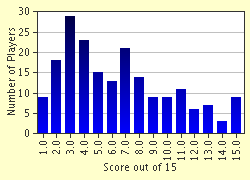Quiz Answer Key and Fun Facts
1. Which of the following were East Central European Roman provinces?
2. This empire established itself in Hungary in the mid-8th century, A.D:_______
3. How far afield did the Magyars raid in the ninth century? Into which of the following places did the Magyar horsemen pour?
4. Which of the following never ruled Poland:
5. The Mongols swept into East Central Europe in what year?
6. Though originally occupied with slaughtering Prussian and Lithuanian pagans, this group was destined to become embroiled in countless wars with Poland: ________.
7. What did German settlers spread throughout East Central Europe?
8. Who won the battle of Grunwald, 1410?
9. This 15th century group sparked what is variously described as a Czech Reformation or a national or bourgeois revolution: _________.
10. "The Deluge" refers to what part of Poland's history?
11. With which state did Poland form a Commonwealth?
12. Who was defeated at the Battle of White Mountain in 1620?
13. By 1606 this country had fallen almost in its entirety to the Ottoman Turks: __________.
14. Which states were privy to the second partition of Poland?
15. In 1807 Napoleon took the Prussian partition spoils (in 1809 Austrian spoils were added) to form what new state? Who was its ruler?
Source: Author
brutus_cassius
This quiz was reviewed by FunTrivia editor
bloomsby before going online.
Any errors found in FunTrivia content are routinely corrected through our feedback system.

